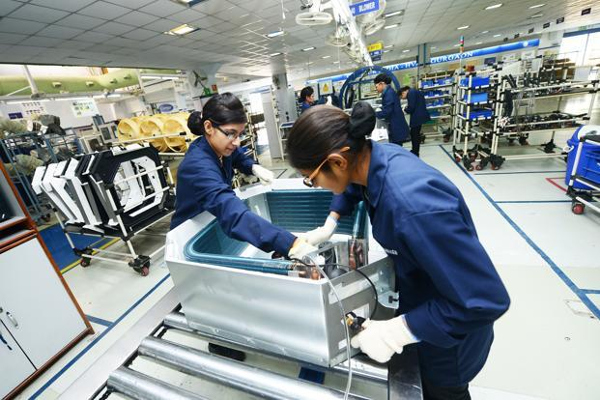Strong support from live-in assistance and grandparents as well as flexible working hours saw more participation of women in India in the workplace, as the proportion of female hires rose from about 30 percent in April to 37 percent at the end of July, a LinkedIn study revealed on Tuesday.
India bucked the trend in sustaining and even rising gender diversity as the hiring of women in many developing countries followed a U-shaped pattern in 2020, dropping in April before recovering in June and July.
According to the second LinkedIn monthly edition of the ‘Labour Market Update’, remote working schemes have encouraged more women to join the workforce despite the school and childcare facilities being closed during the lockdown.
Ms Pei Ying Chua, APAC Lead Economist, Economic Graph team at LinkedIn said, “In India, work from home has certainly boosted gender parity and emerged as a great equaliser in terms of gender diversity with increase in female representation across key sectors. The lockdown, which promoted acceptance of the work from home concept supported by flexible work hours, has emerged as an opportunity for women to rebuild their careers and start afresh”.
Overall, by the end of July, recruiting had gained 25 percentage points.
“The risk of second-wave infections persists, however, and further recovery may also be tempered by poor economic prospects,” the report said.
Across business services, education, health care and media and communications, female representation rose by eight percentage points.
“With the exception of the manufacturing sector, during the lockdown period, female representation in most industries increased and continued to increase in subsequent months,” said the study.
In comparison to the four percentage points increase seen for industries that started out with lower gender parity, such as consumer goods, banking, manufacturing and software and IT, the increase in female representation was even more pronounced in industries that already had higher gender parity to start.
“It is likely that these industries are generally more family-friendly in terms of flexible hours and job schedules, thus the difficulties of having to juggle job and household duties has led more females to enter those industries,” the LinkedIn study noted.
Source: IBEF
You may also like
-
Trade Connect E-platform For Exports Is Single Window, Fast, Accessible And Transformational: Shri Piyush Goyal
-
Dot Simplifies Approval Processes For Telecom Licenses And Wireless Equipment
-
Coal Production and Supply Trends on Positive Trajectory
-
Union Minister To Release Booklets On Promotion Of Indigenous Species & Conservation Of States Fishes
-
2nd India-Japan Finance Dialogue held in Tokyo on 6th September, 2024
